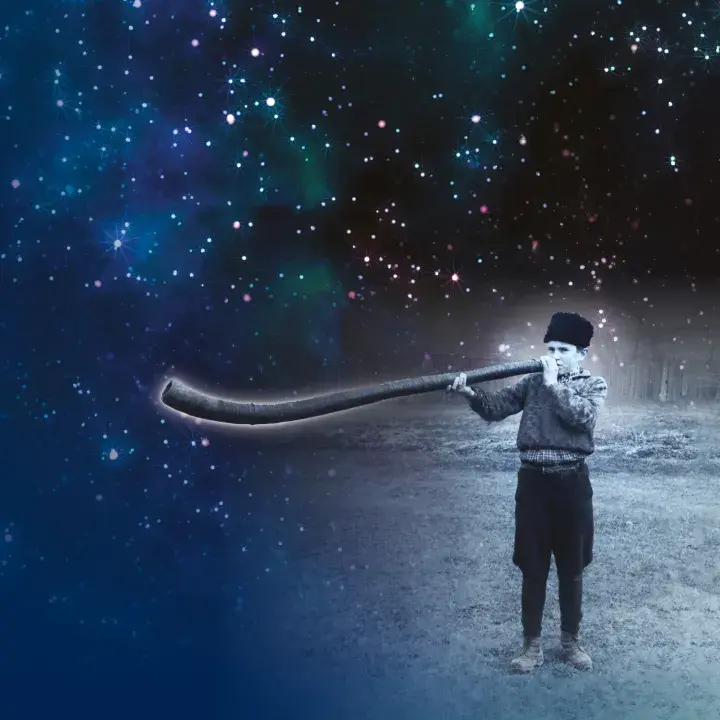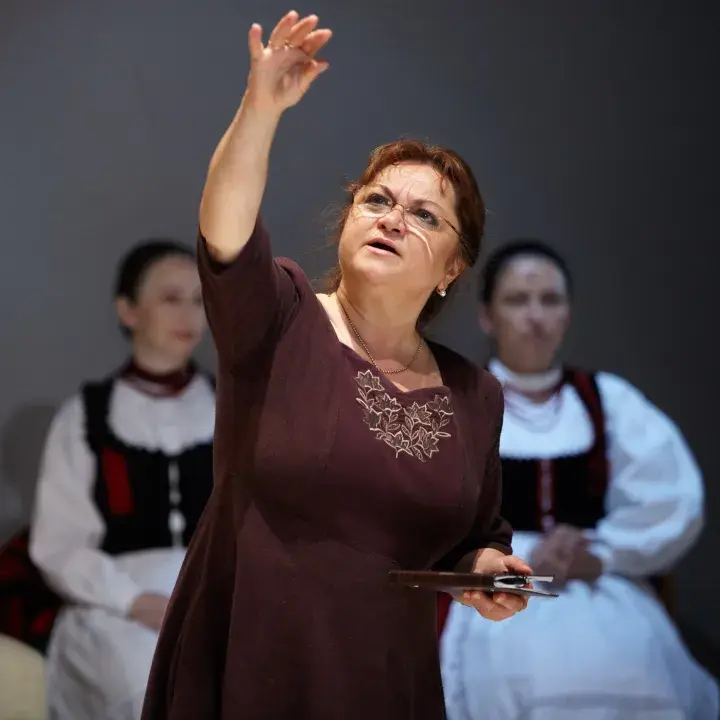The dialogue between folk attires, bourgeois fashion, and high-quality dressmaking is rarely discussed, as they seem to be contradictory phenomena. Traditional folk costumes come about as the product of a community or the individual influence of unknown creators. They are tied to a single region and symbolise permanence. The incorporation and adoption of costume elements occur through community norms, whereas bourgeois fashion and haute couture originate in the globalised world of fashion under the obligation of transience and renewal and are usually associated with individual designers. It is important to see who had and has what motivation when they touch upon folk motives, and whether they have a personal connection to them. It is also interesting to question whether the creator uses folk motifs without any attachment, only as an aesthetic quality. If so, what do they reach for, and why does a particular region inspire them?
In the exhibition, we use a variety of concepts that are based on something other than a professional consensus (folk costumes, ethno-fashion, folk fashion or haute couture). The mutual influence of folk art and fashion design is largely explored in a Hungarian setting, but in the case of Lea Gottlieb and Mariska Kárász, we will also look into an international context. We do this because the possibilities for interpretation are immense. The exhibition does not want to take a stand; it only means to showcase the phenomena from an academic point of view.
Parallel with the decline of traditional folk art, the interest in folklore appeared at the end of the 19th century, both nationally and internationally. In addition to ethnographers, archaeologists, and art historians, artists and the wider public have turned their attention to the values of folk art. In fashion, ideas and motifs drawing from the source of traditional folk art appeared in the early 1910s. Folk pottery, weaving, embroidery, folk attires and accessories served both as formal and technical sources of inspiration, but in many cases, they were just copied without their implied original and symbolic meanings. Fashion designers used the original elements more directly or in a reinterpreted way. In Europe, this trend was represented right from the start by the most renowned international fashion and costume designers, like Paul Poiret, Léon Bakston and Elsa Schiaparelli. Their designs were theatre costume-like, using the forms of the antique and Far Eastern world, seen in Western European sample albums, as well as the embroideries, decorative elements and techniques of the folk costumes of the peoples of Central and Eastern Europe and the Balkans. Since Poiret, fashion designers have returned to the colours and shapes of folk costumes from time to time and used their imagination to invite the two areas into dialogue.
Our exhibition aims to provide a Hungarian panorama of this dialogue from the early 20th century to contemporary designers. While the exhibition proposes to interpret the models in a historical context, it also emphasises the creative processes used by designers from a consciously formalist approach. This approach also provides an opportunity to revisit the complex issues of definition characteristic of the history of clothes, which are unclear in both the Hungarian and the international terminology. The question referred to in the title - the question of folk fashion - gives complex perspectives for the interpretation of the relationship between fashion and folk art. The exhibition does not seek a complex presentation but flashes a cavalcade of "dress etudes and stories" instead.
The focus of the exhibition is the textile collections of the Hungarian Heritage House – the Hungarian Museum of Applied Folk Arts -- as well as the clothes and personal stories of several other museums and private individuals. Nearly 150 pieces of clothing and accessories are displayed, which bear witness to the pervasive and continuous relationship between folk art and fashion history, as well as the permeability of the boundaries between fashion design and popular culture.
We hope that the exhibition will provide the visitor with a new perspective in which old and contemporary works are presented in a deeper historical context, thus shaping a fruitful dialogue between cultural heritage and contemporary thought. In the exhibition, one can also get an idea of how the folk costumes of old times have inspired everyday people and designers and what methods ethnographers use to understand these clothes.


